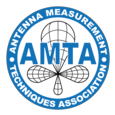Allen Newell,Stuart Gregson, November 2014
In recent years a number of analyses and simulations have been published that estimate the effect of using a probe with higher order azimuthal modes with standard probe corrected spherical transformation software. In the event the probe has higher order modes, errors will be present within the calculated antenna under test (AUT) spherical mode coefficients and the resulting asymptotic far-field parameters [1, 2, 3, 4] where the simulations were harnessed to examine these errors in detail. Within those studies, a computational electromagnetic simulation (CEM) was developed to calculate the output response for an arbitrary AUT/probe combination where the probe is placed at arbitrary locations on the measurement sphere ultimately allowing complete near-field acquisitions to be simulated. The planar transmission equation was used to calculate the probe response using the plane wave spectra for actual AUTs and probes derived from either planar or spherical measurements. The planar transmission formula was utilized as, unlike the spherical analogue, there is no limitation on the characteristics of the AUT or probe thereby enabling a powerful, entirely general, model to be constructed. This paper further extends this model to enable other measurement configurations and errors to be considered including probe positioning errors which can result in ideal first order probes exhibiting higher order azimuthal mode structures. The model will also be used to determine the accuracy of the Chu and Semplak near-zone gain correction [5] that is used in the calibration of pyramidal horns. The results of these additional simulations are presented and discussed. Keywords: near-field, antenna measurements, near-field probe, spherical alignment, spherical mode analysis. REFERENCES A.C. Newell, S.F. Gregson, “Estimating the Effect of Higher Order Modes in Spherical Near-Field Probe Correction”, Antenna Measurement Techniques Association (AMTA) 34th Annual Meeting & Symposium, Bellevue, Washington October 21-26, 2012. A.C. Newell, S.F. Gregson, “Higher Order Mode Probes in Spherical Near-Field Measurements”, 7th European Conference on Antennas and Propagation (EuCAP 2013) 8-12 April 2013. A.C. Newell, S.F. Gregson, “Estimating the Effect of Higher Order Modes in Spherical Near-Field Probe Correction”, Antenna Measurement Techniques Association (AMTA) 35th Annual Meeting & Symposium, Columbus, Ohio, October 6-11, 2013. A.C. Newell, S.F. Gregson, “Estimating the Effect of Higher Order Azimuthal Modes in Spherical Near-Field Probe Correction”, The 8th European Conference on Antennas and Propagation (EuCAP 2014) 6-11 April 2014. T.S. Chu, R.A. Semplak, “Gain of Electromagnetic Horns,’’ Bell Syst. Tech. Journal, pp. 527-537, March 1965
